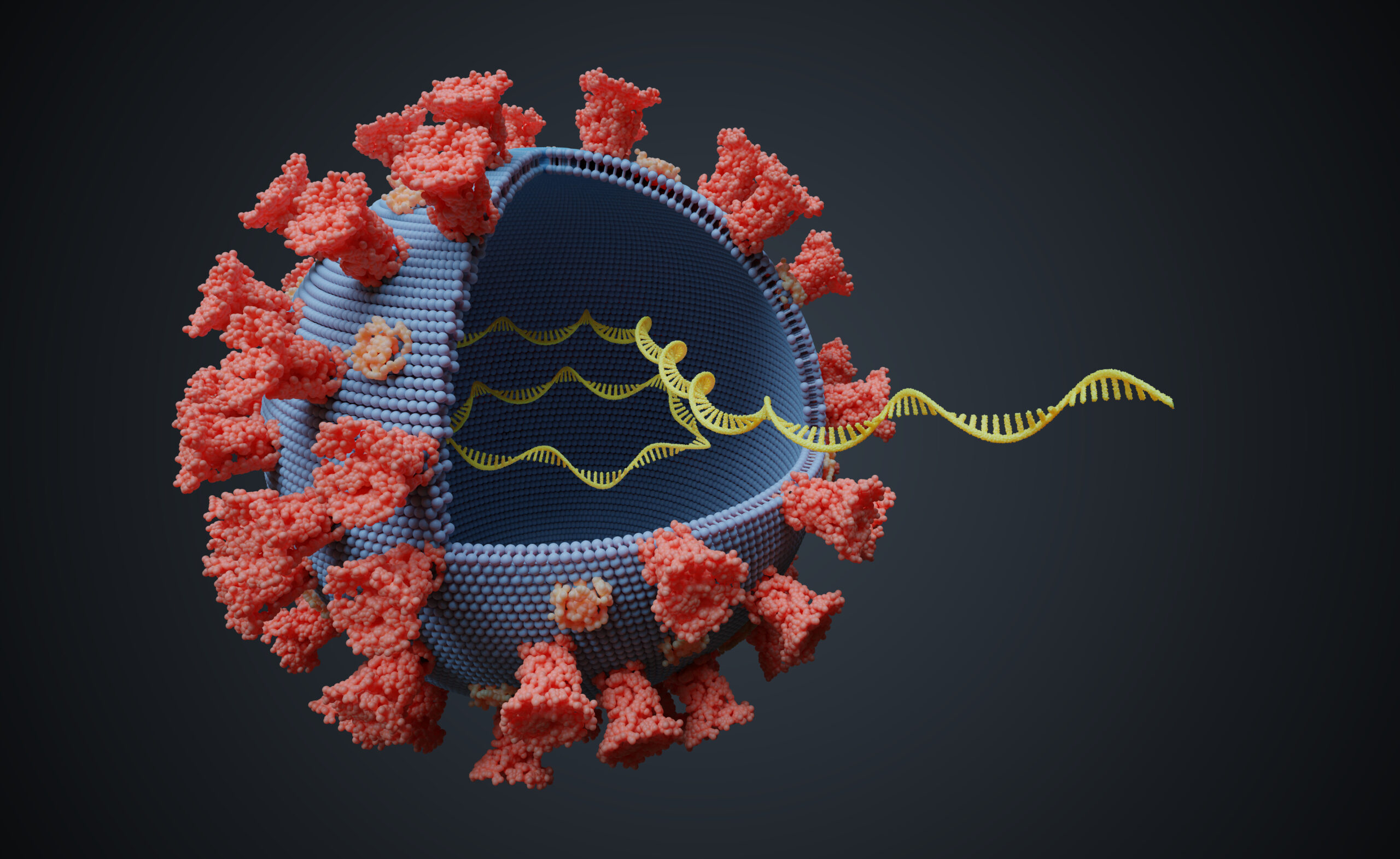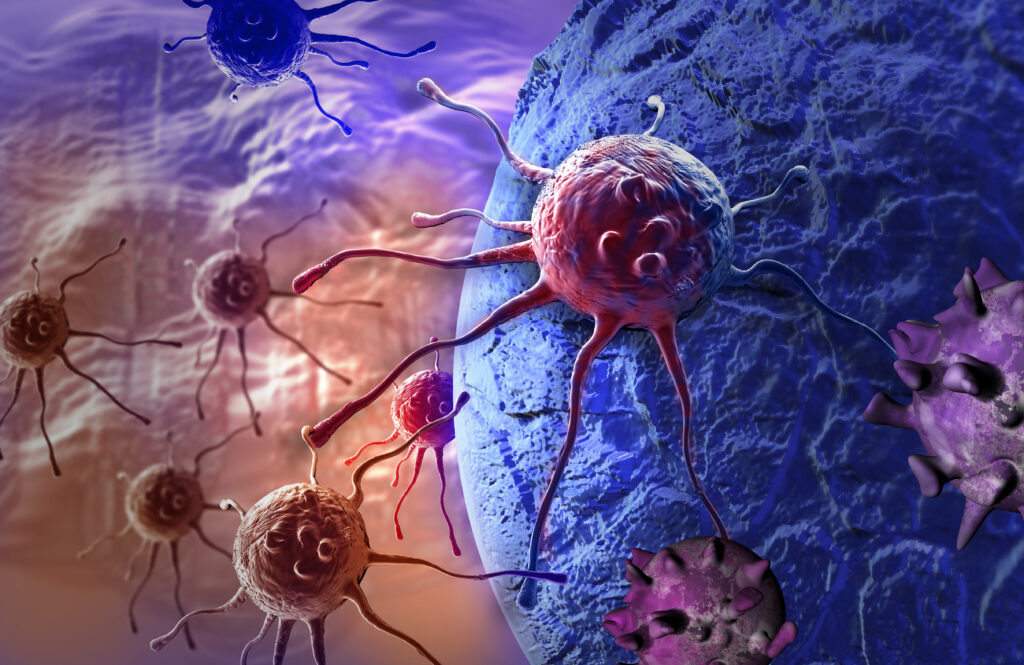A New Frontier: RNA-Based Vaccines & Cancer Treatments

RNA based therapeutics, particularly mRNA, has been experiencing a period of rapid growth, partly due to the influx of funding for mRNA Covid-19 Vaccines. One area that has the potential to benefit from mRNA vaccines is cancer. There are various techniques that have potential to combat the deadly disease.
The two major classes of nucleic acids are deoxyribonucleic acid (DNA) and ribonucleic acid (RNA). DNA is the genetic material found in all living organisms. RNA is primarily engaged in protein synthesis. In eukaryotes, the DNA molecules never leave the nucleus but instead use an intermediary to communicate with the rest of the cell. This intermediary is the messenger RNA (mRNA). Other types of RNA—like rRNA, tRNA, and microRNA—are involved in protein synthesis and its regulation. Harnessing the power of RNA is currently a key area across the pharmaceutical industry.
A New Frontier: mRNA Cancer Vaccines
mRNA vaccines are central in the drive to establish more effective cancer treatments. mRNA vaccine cancer vaccines alert the immune system, making the immune system attack tumours. Several approaches to mRNA cancer vaccines are currently in development. Examples include dendritic cell vaccines and numerous types of directly injectable mRNA. Clinical trials have shown promising results showing antigen-specific T-cell responses and prolonged disease-free survival. Some experts believe that an mRNA vaccine for cancer could be approved in the US by the FSA within five years.
Many mRNA vaccines for cancer take a mass-production approach: Ready-made vaccines are created to target proteins found on the surface of specific cancer tumours. Sadly, the scalability and efficacy of mRNA cancer vaccines are currently still speculation, but some experts expect challenges. Unfortunately, with cancer, there is no single target, and DNA mutations in cancer cells differ from patient to patient. This makes the creation of a widely applicable vaccine difficult. This is where personalized or precision medicine may provide the answer.

Precision Medicine: Personalized RNA Cancer Vaccines
RNA presents many new opportunities for precision medicine. For example, when fighting cancer, a tissue sample can be taken from a patient’s tumour. Their DNA is then analysed to identify mutations that distinguish the cancer cells from normal, healthy cells. Next, computers compare the two DNA samples to identify the unique mutations in a tumour. Finally, the results are used to create a molecule of mRNA that will be delivered through the vaccine. Personalized cancer vaccines wake up specialized T-cells that recognize abnormal cancer cells and trigger them to attack.
Phase one clinical trials were recently completed at Mount Sinai Hospital in New York. Patients were given ten personalized vaccines over six months after having undergone standard cancer treatment such as surgery. Thirteen patients with a high chance of tumour recurrence participated in the trial. After 880 days, four had no evident cancer, four were receiving other cancer treatments, four had died, and one person had dropped out. While the trial used only a small number of patients, researchers are hailing it as a success and a vital first step to alleviating safety concerns.
The cost of personalized medicine has long been its most significant hurdle. There is reason to be optimistic, however. The first time the human genome was sequenced, it took 13 years and a billion dollars. Now it can be done for a few thousand dollars in a day or two.
RNA Interference: Controlling Protein Production
A growth area for RNA cancer treatment is RNA interference (RNAi), which is the process by which RNA stops or inhibits protein creation by the body’s genetic code. It is an essence, a stop-sign for our DNA, regulating protein production and ensuring that the body does not overproduce. In 2006, Fire and Mello were awarded the Nobel Prize for their discovery of RNAi.
Researchers are exploring what happens small-interfering RNA (siRNA) is inserted into cells. In theory this would provide an effective way to control genes and, in turn, protein production. RNAi therapy is a potential game-changer for cancer treatment; however, there are still challenges to overcome. siRNAs have not yet been widely adopted due to their low stability and difficulty to deliver. Efficacy, however, is only half of the battle as the market will only tolerate certain routes of administration. Unprotected siRNAs are attacked by the immune system and are easily removed by the kidneys, eliminating many common delivery routes. In addition, siRNA therapeutics do not work until entering the cytoplasm.
Conclusion
Cancer is currently the leading cause of death in humans. Many researchers have dedicated their lives to battling the disease and while advances have been made, many forms of cancer still do not have an effective treatment. However, RNA-based approaches are providing new options for advancing cancer immunotherapy. The next few years will be a proving ground for RNA-based therapies against cancer as more companies progress to clinical trials. But, for now, the outlook appears promising.






